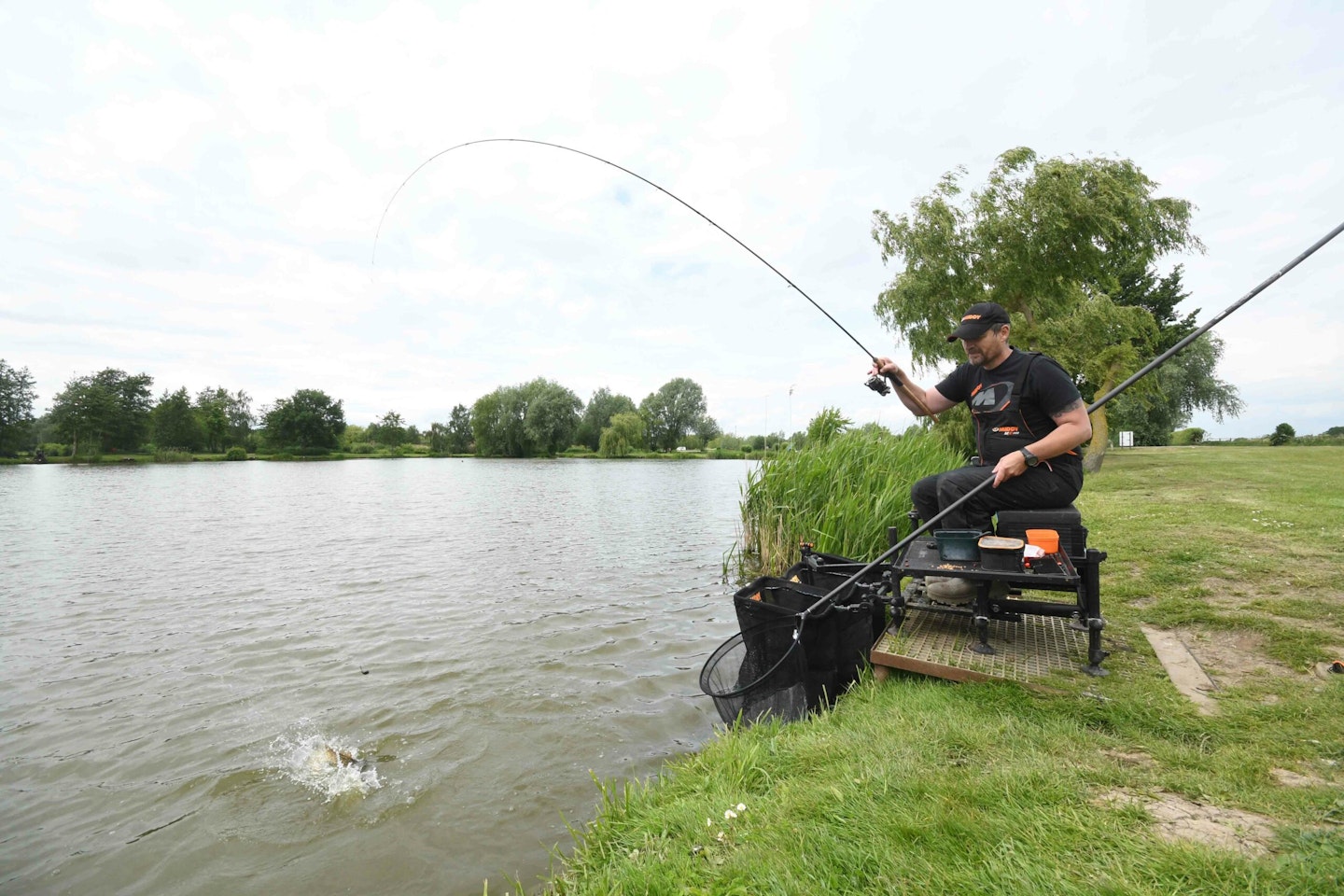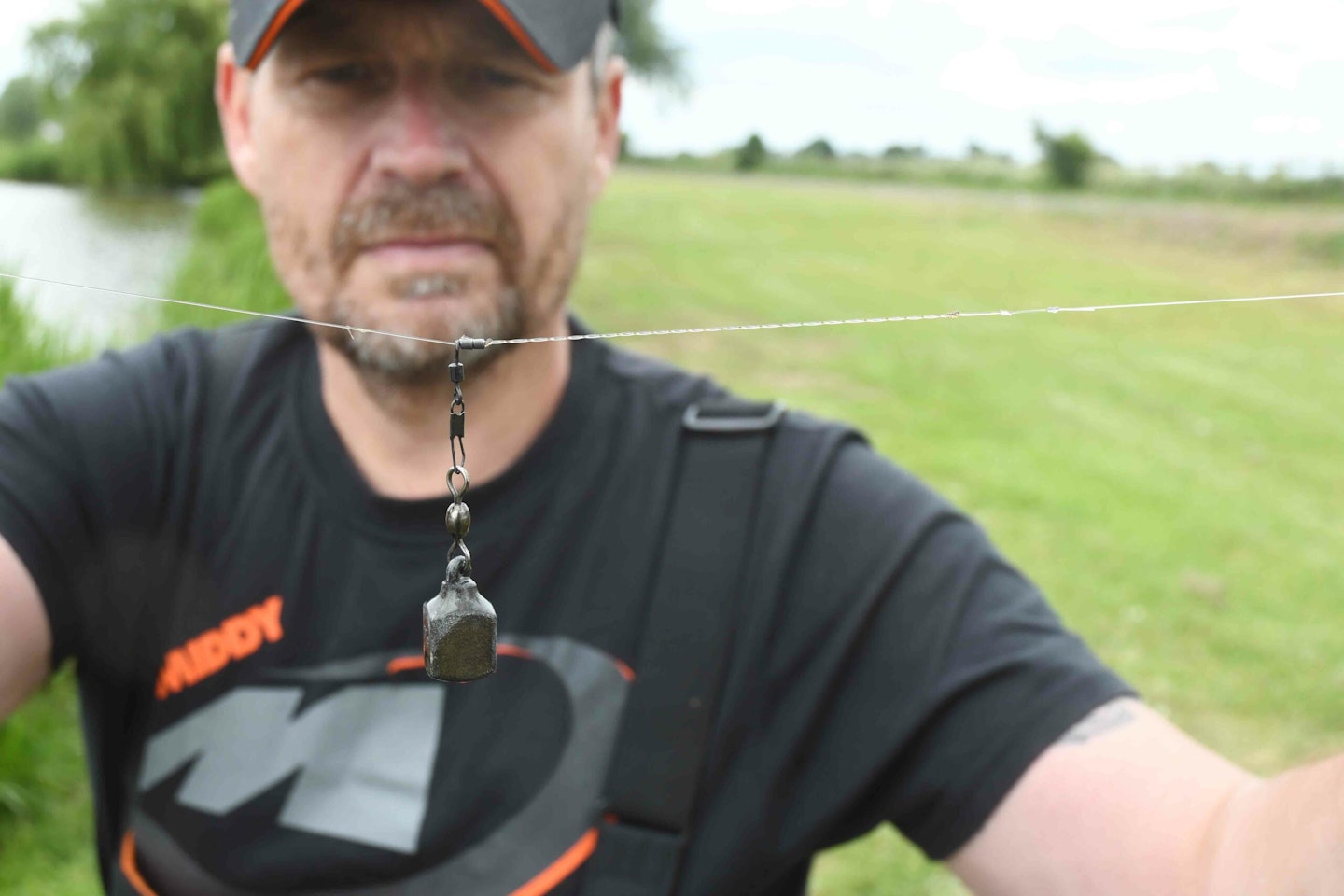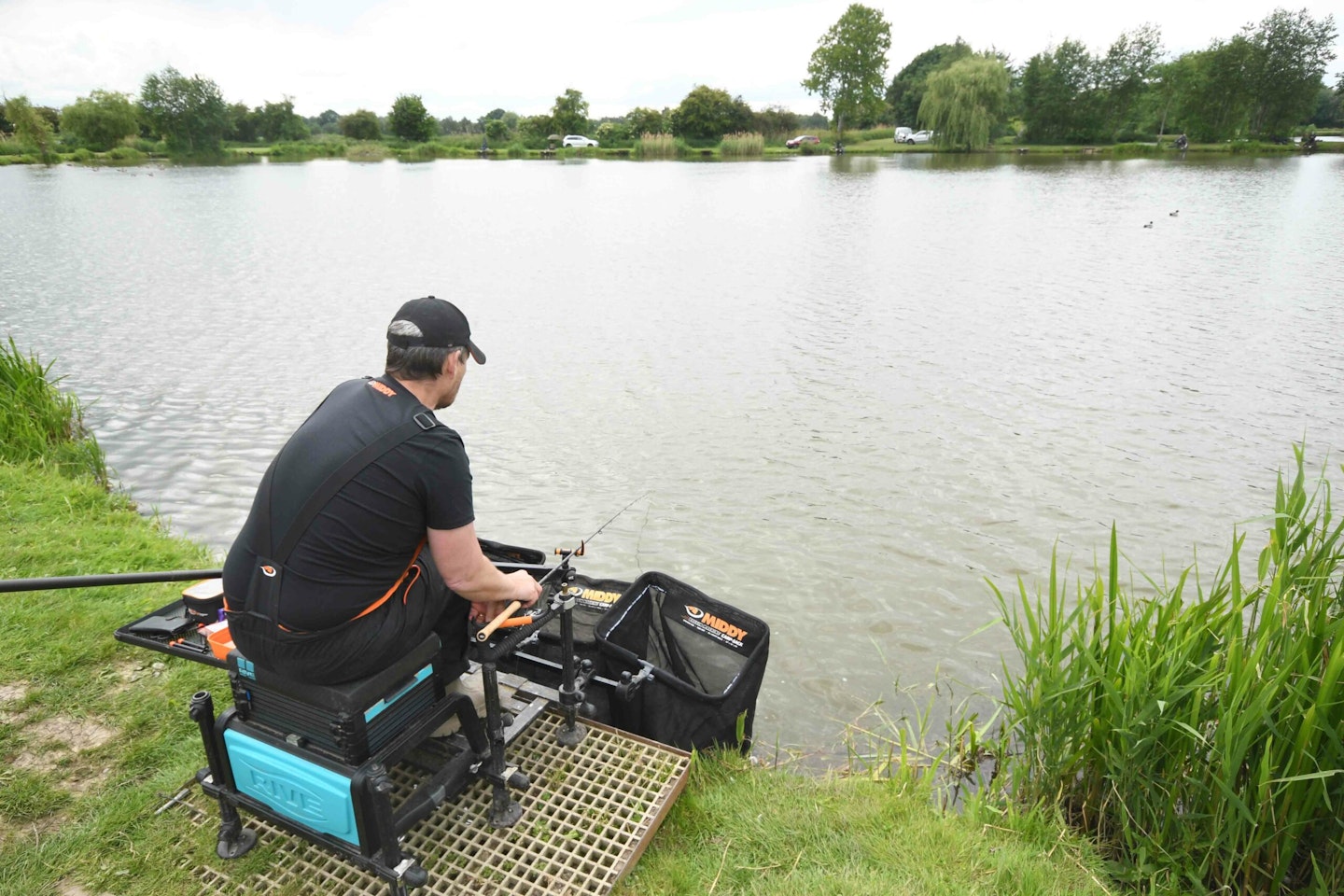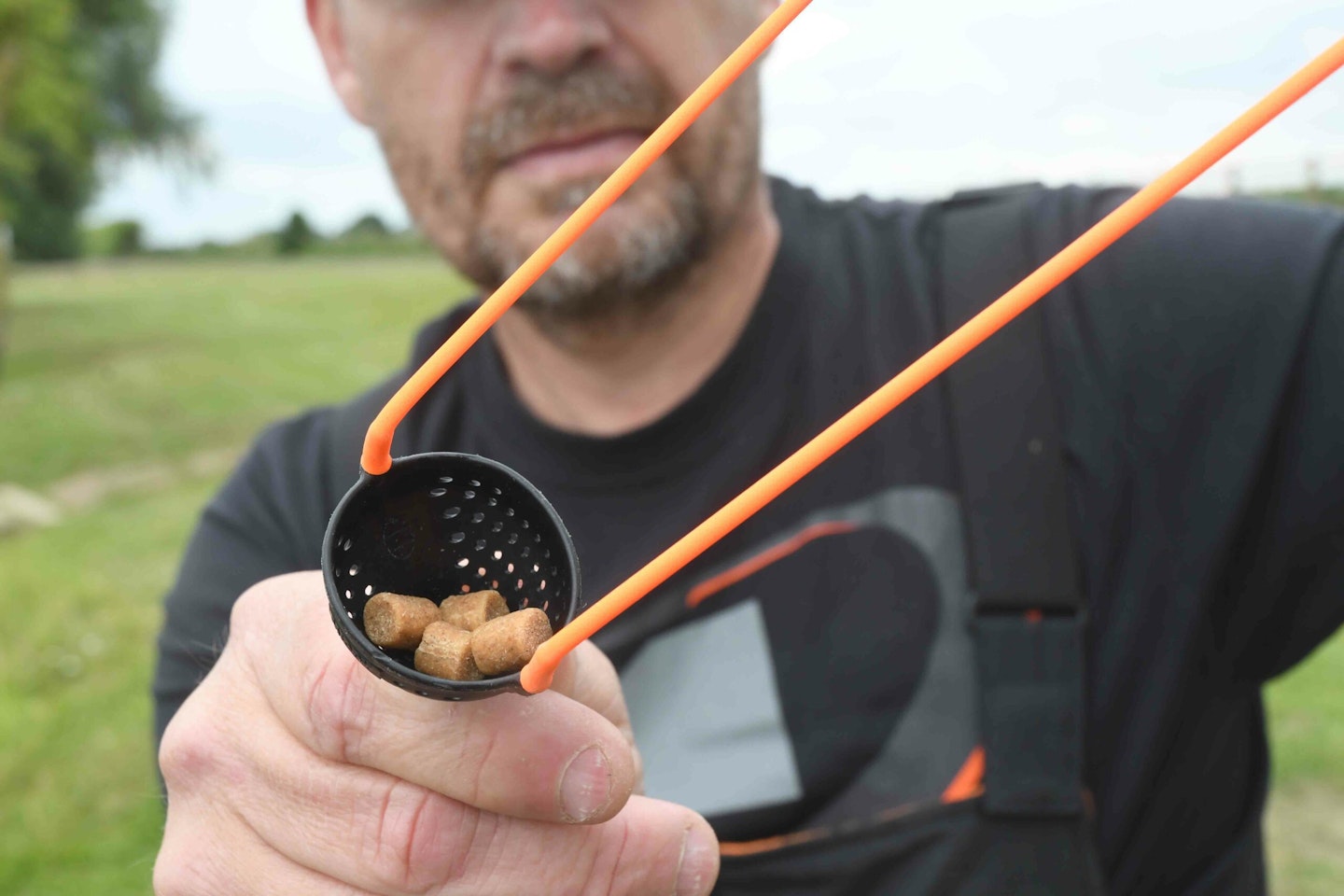POLEFISHING is seen as the number one tactic for short-range work, but there are times when a bomb is even more effective.
When the fish are feeding aggressively and competing for your bait, they can swim into the vertical line between a pole float and hookbait, leading to false indications. Switch to the bomb, though, and that issue will be ironed out.
Here's how I do it...

INCORPORATE A BOOM
Tie a 6ins twizzled boom in the end of your mainline to help prevent tangles. Attach your hooklength below this via a loop-to-loop system.

PREPARE FOR CHANGE
Use the lightest bomb possible, but be prepared to increase the size if conditions worsen. A quick-change swivel lets you switch instantly.

TRUST IN SHORT LINKS
A short 6ins-12ins hooklength makes sure the fish hook themselves against the lead. Bites are savage, but 0.18mm is enough to stop breakages.

RELY ON BIG HOOKS
Hooked fish will tear off in a split second, with hook-pulls a possibility. A large hook gives a solid hookhold, with a size 10 Middy Q-Curve a good choice.

ANGLE IT RIGHT
Point the feeder arm so it’s almost straight in front of you, with a slight angle. This aids self-hooking and stops the rig being dragged out of position.

MATCH THE HATCH
A hookbait that matches your feed is a good option. Fish are sometimes wary of stand-out baits like wafters, so a banded 6mm or 8mm pellet is better.


